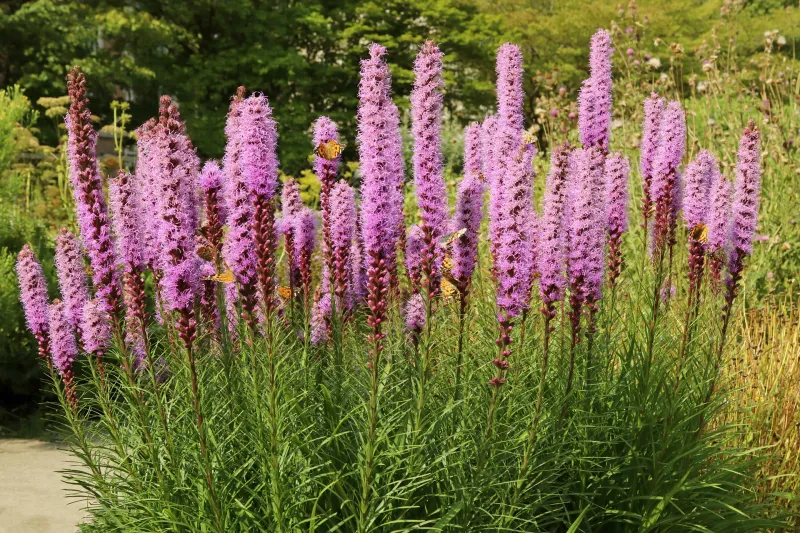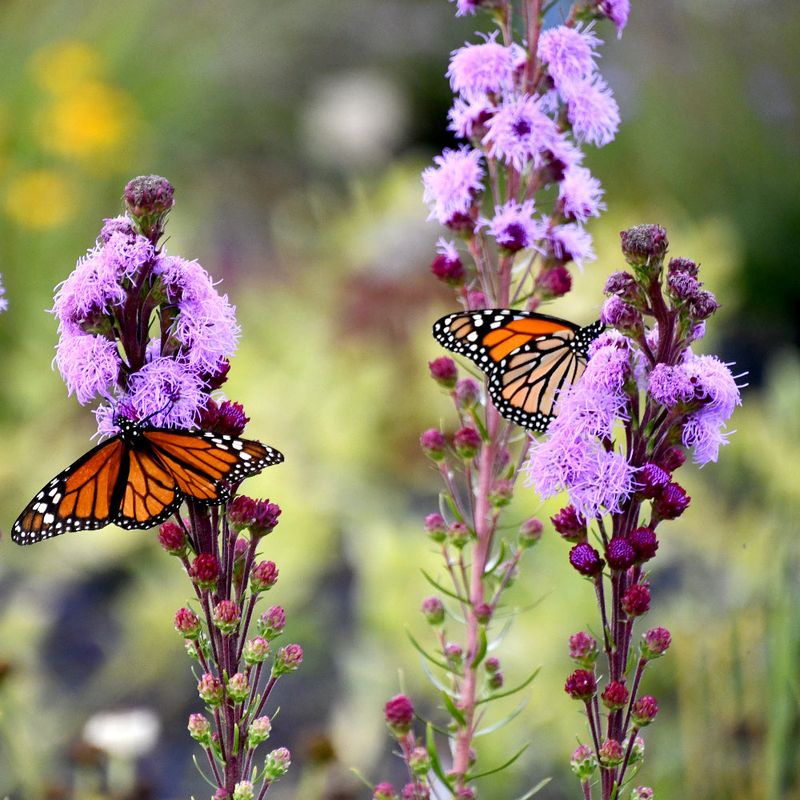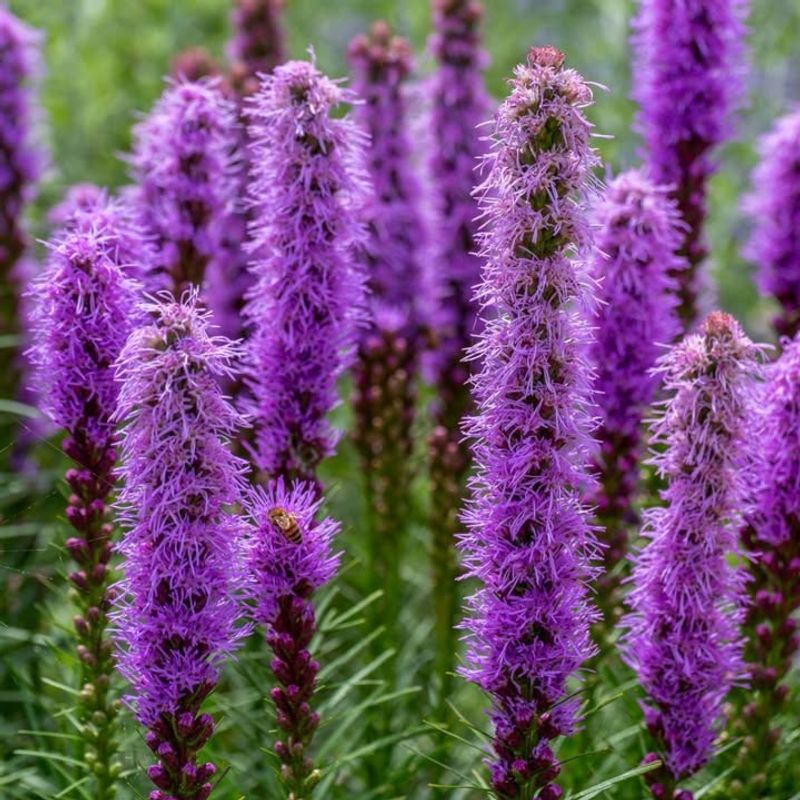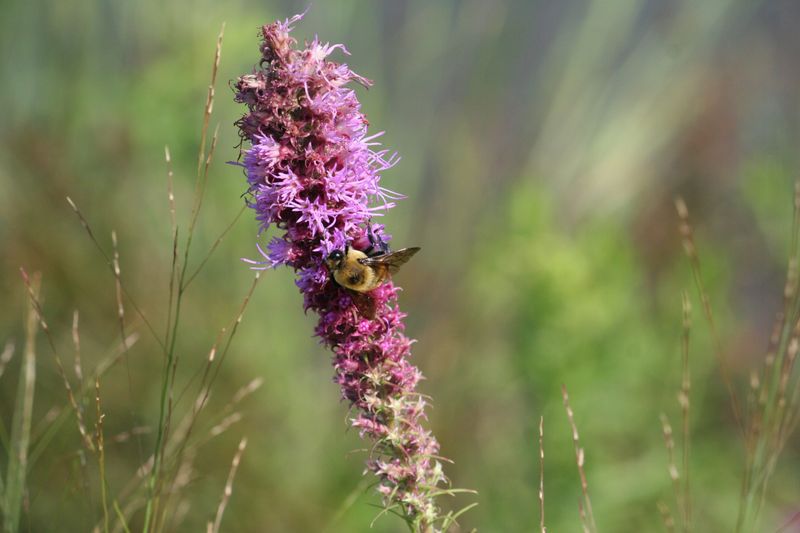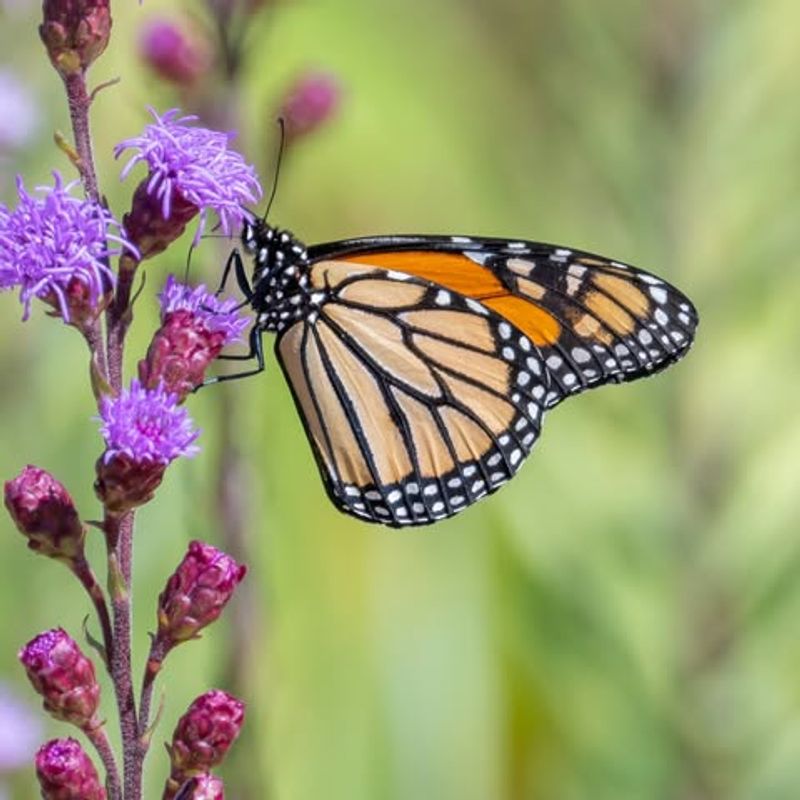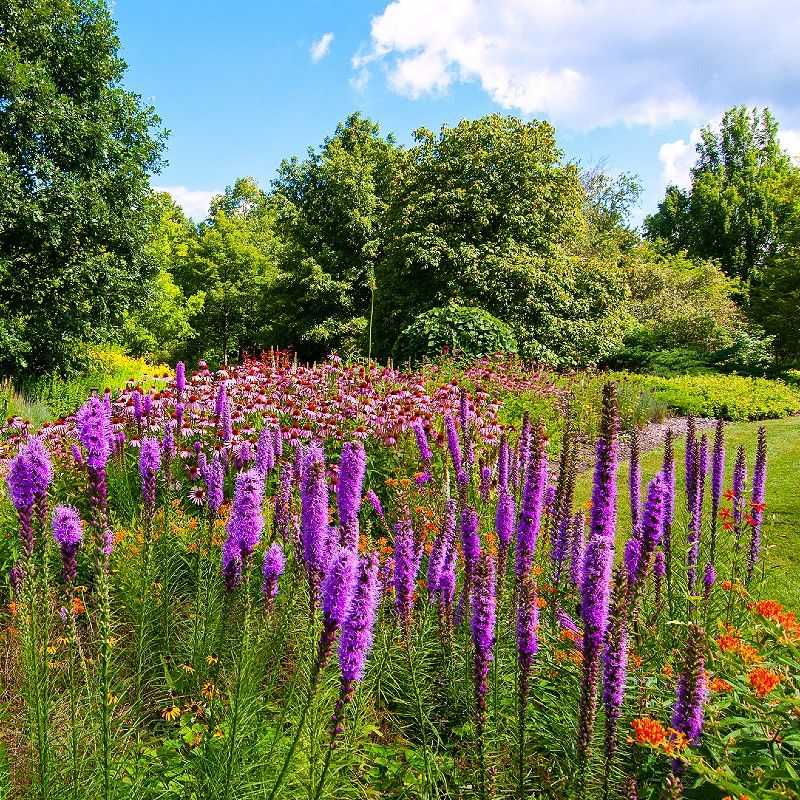A walk through a Wisconsin yard this season may feel livelier than usual, with butterflies drifting through like tiny stained-glass visitors. I noticed it in my own garden when one simple native plant turned a quiet corner into a busy feeding spot.
Its blooms drew in more wings than I had seen in years, and the whole space seemed to hum with life. This plant asks for little but gives back in color, movement, and a steady stream of pollinators. For anyone hoping to bring more butterflies into their yard, Meadow Blazing Star can work wonders.
Purple Spikes Bloom When Butterflies Need Them Most
Monarch butterflies especially rely on these late-summer nectar sources to fuel their incredible journey south.
Unlike spring flowers that fade by midsummer, meadow blazing star provides energy when pollinators struggle to find food.
Each spike contains dozens of tiny flowers packed with sweet nectar that butterflies can easily access with their long tongues. Watching these purple towers sway in prairie winds while covered in feeding butterflies creates unforgettable wildlife moments.
Native Roots Run Deep Into Prairie Soil
Root systems can extend five feet or more beneath the surface, anchoring plants firmly while accessing moisture during dry spells. Deep roots also help prevent soil erosion on hillsides and along waterways throughout Wisconsin’s landscape.
Building such impressive underground networks takes several years, which explains why established plants survive harsh winters droughts.
Young plants focus energy on root development before producing showy flower displays. Once mature, these native perennials return reliably each season without requiring replanting or special care from gardeners.
Flowers Open From Top To Bottom In Unusual Pattern
Most wildflowers bloom from bottom to top, but meadow blazing star does the opposite. Flowers at the spike’s tip open first, gradually progressing downward over several weeks.
This unusual blooming strategy extends the flowering period, giving butterflies and bees a longer window to visit. Early-opening flowers may already be forming seeds while lower buds still wait their turn.
Observing this top-down progression makes identifying the plant easier, even from a distance across prairie meadows. Nature’s clever design ensures pollinators find fresh nectar throughout fall.
Tolerates Tough Growing Conditions Without Complaint
Gardeners appreciate how meadow blazing star handles clay soil, occasional drought, and full sun exposure that would stress other ornamental plants. Evolution shaped this species to thrive in challenging prairie environments where only the toughest survive.
Wet conditions followed by heat don’t phase established plants. They also resist most common garden pests and diseases without chemical treatments.
Adding them to home landscapes reduces maintenance time while supporting local wildlife populations. Wisconsin gardeners looking for low-maintenance beauty find this native wildflower checks every box.
Attracts More Than Just Butterflies To Your Yard
While monarch butterflies get most attention, countless other species benefit from these nectar-rich flowers. Bumblebees, native solitary bees, and even ruby-throated hummingbirds make regular stops at blooming spikes throughout fall afternoons.
Creating pollinator habitat starts with choosing plants that feed multiple species rather than just one or two. Meadow blazing star functions as a wildlife magnet, drawing beneficial insects that also pollinate vegetable gardens and fruit trees. Goldfinches arrive later to feast on ripened seeds, extending wildlife value into autumn months beyond the blooming period.
Easy To Grow From Seeds Or Plant Divisions
Starting new plants doesn’t require advanced gardening skills or expensive equipment. Seeds collected in fall can be scattered directly onto prepared soil in late autumn or early spring for natural germination.
Established clumps also divide easily every few years, creating multiple plants from one original specimen. Simply dig up the root mass in early spring, separate it into sections with sharp tools, and replant divisions in new locations. Sharing extras with neighbors helps spread native plants throughout communities while strengthening local butterfly populations across wider areas.
Supports Ecosystem Health Beyond Individual Gardens
Conservation groups across Wisconsin include meadow blazing star in prairie restoration projects because healthy ecosystems need diverse native plant communities. Each species plays specific roles that imported ornamentals cannot fulfill for local wildlife.
When many gardeners choose native plants, collective impact creates wildlife corridors connecting fragmented habitats across urban and suburban areas.
Butterflies traveling between remaining prairie patches find necessary refueling stations in yards and parks. Your garden becomes part of a larger conservation network supporting threatened species and preserving Wisconsin’s natural heritage for future generations to enjoy and study.



